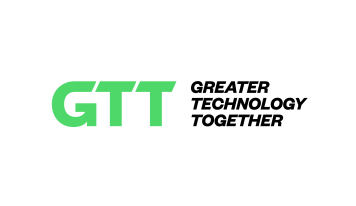If you have any interest in understanding how the internet will or will not disrupt television broadcasting you must read this article from Bill Gurley, Benchmark Capital. Bill explains in well-thought out detail that affiliate fees will block disruption for many years. In other words, the television market via fees paid by affiliates such as cable companies are worth – $32 billion/year.
What does this mean? Basically, in order for a variety of content to go free online that content has to give up affiliate fees. Moreover, affiliates won’t pay fees if the same content is made free elsewhere.
Cable companies are marketing their TV Everywhere concept where all content will be available in various forms – computer, iPhone, iPad etc. The kicker is the cable companies and other affiliates will pay for these new viewing mediums meaning it is more lucrative to continue keeping a lock on your content and disributing it via companies who pay you to carry it.
The point is made well that if you think the TV industry will be disrupted overnight, don’t hold your breath. And with Google, Apple and Microsoft all gunning for this market, it will be interesting to see which strategies work to transform TV to TV 2.0.
Here is an excerpt to give you a taste:
In addition to not appreciating these money flows, most of the digerati in Silicon Valley have huge misperceptions about the content owner’s preferences. They assume that content owners would like to distribute directly to consumers precisely because the Internet allows them to do so. They would no longer be in the “death grip” of the content packager (cable and satellite companies) who take an unreasonable fee for their services. This is simply not how these content owners view the world.
Content owners absolutely prefer to be aggregated in a bundle of channels and, as a result, to receive affiliate fees. They also have little interest in “a la carte” packaging, a concept dreamed up by regulators in Washington but not desired by the heads of the content studios. Simply put, there is adequate value provided in distribution and revenue collection. To launch a direct channel (and forgo these fees), and then attempt to regain your customers one by one is a harrowing experience. Why earn your customers one by one when you can get to mass volumes, and a fixed amount of recurring revenue, through a distribution partner? If you create a new piece of camping equipment would you sell it online or try to obtain distribution through REI?
ESPN360 is a solid example of content owner’s preference for the affiliate fee driven/ distribution partner model. As the Internet became fast and pervasive, ESPN (owned by ABC/Disney) saw a clear opportunity to deliver more programming to their users and launched an online-only product called ESPN360 (recently renamed ESPN3). This on-demand, “over the top” offering is a killer product for the true sports fan, offering access to significantly more live games that was ever possible on a traditional linear cable channel. Despite the fact that ESPN has the brand, the reach, the market power, and the technology to charge users directly for this new product, they chose a different path. ESPN sought out distribution partners to bundle ESPN360 in with their standard video television packages, even though this was confusing and even baffling to most Internet users.
So against this backdrop, the cable companies have developed a remarkably shrewd strategy to simultaneously leverage their broadband infrastructure and affiliate-fee money flows. This concept, known as TV Everywhere, has two main components (once again, this move by the cable companies is extremely well articulated in the recent Business Week cover story on the same subject). First, you tell your customers that you want to provide them with a killer new service. They are already paying for all the content they receive through the linear channel stack. What if that same content could be viewed at any time “on-demand” and also through multiple devices (TV, PC, and mobile)? Sounds great so far. Who wouldn’t want this? And “everything” on a service like Comcast is more than any digital aggregator has yet even dreamed of aggregating. Ignore for a moment that this is not completely working just yet and focus on what they will “eventually” deliver. It’s also helpful to show the FCC you are being innovative, and not resting on your laurels the way a true monopolist would. Check.
Next comes the clever part. The cable companies go to the content owners and make the following argument. With Internet-connected TVs on the horizon, you can no longer separate the Internet from the TV or the office from the living room. We pay you an affiliate fee to distribute your content to the homes we serve. We understand you have multiple distribution partners. What we don’t understand is why you would give content to some of them for free, and still expect us to pay our fees. Check-mate. This is the move that forced Hulu to a subscription model. The content owners, struggling with depressed advertising rates as a result of the global recession, quickly acquiesced to Rupert Murdoch’s assertion that maybe all their content should have a price. Disruption disrupted.





